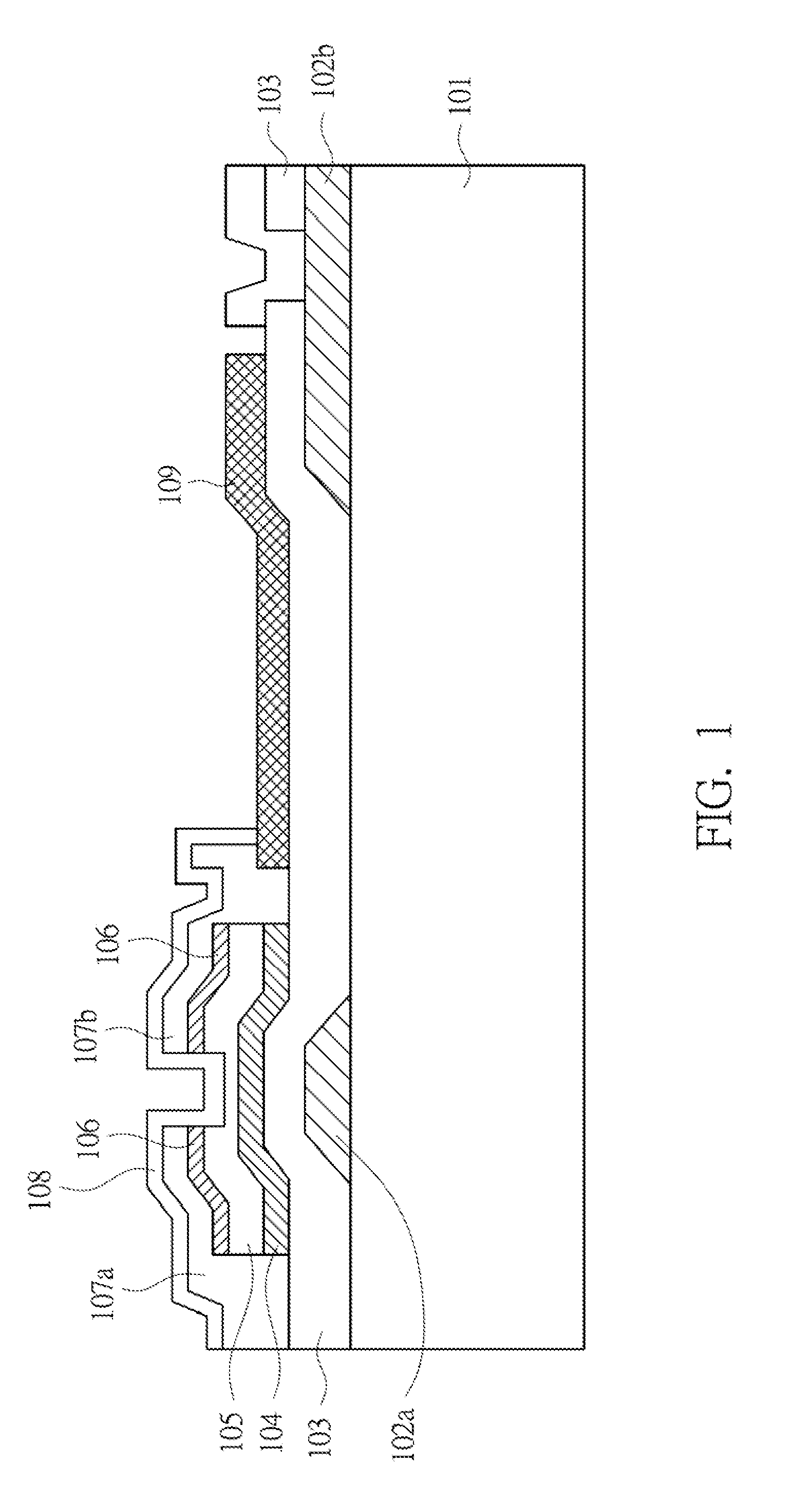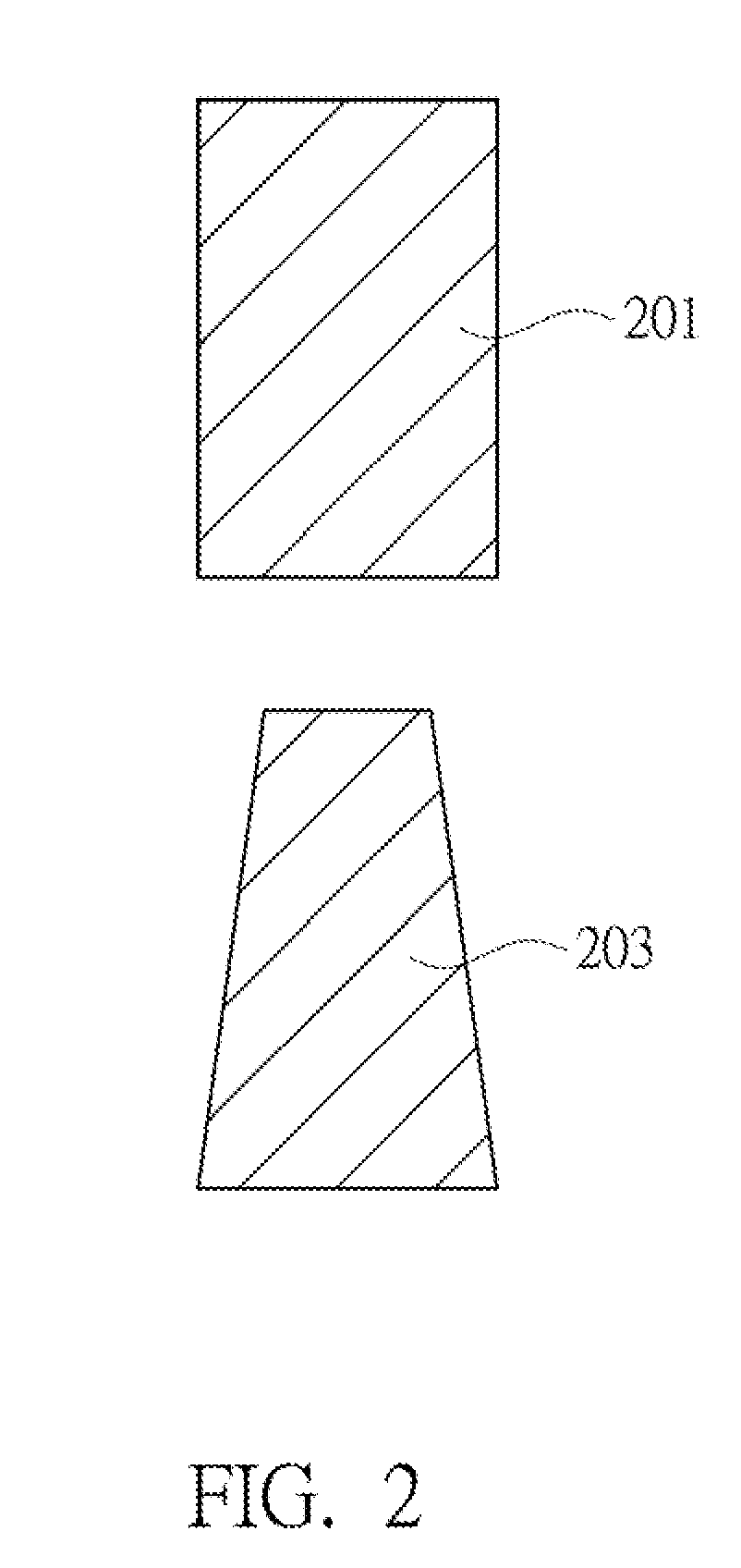Positive photosensitive resin composition and method for forming pattern by using the same
a technology of resin composition and photosensitive resin, which is applied in the direction of photomechanical treatment, photosensitive materials, instruments, etc., can solve the problems that the stripping ability and cross section shape of the pattern of conventional techniques cannot meet the requirements of the industry, the photolithography process is getting more and more sophisticated, and the linewidth formed is also getting narrow. achieve good stripping ability and good cross section shape of the pattern
- Summary
- Abstract
- Description
- Claims
- Application Information
AI Technical Summary
Benefits of technology
Problems solved by technology
Method used
Image
Examples
preparation example a-1-1
[0112]A nitrogen inlet, a stirrer, a heater, a condenser, and a thermometer were set on a 1000 ml four-neck flask, and 0.4 moles of m-cresol, 0.5 moles of p-cresol, 0.1 moles of 3,4-xylenol, 0.65 moles of formaldehyde, and 0.02 moles of oxalic acid were added after nitrogen was introduced. The reaction solution was stirred slowly and heated to 100° C., and polycondensation is performed at the temperature for 6 hours. Then, the reaction solution was heated to 180° C., and dried under reduced pressure of 10 mmHg. The xylenol-type novolac resin (A-1-1) was obtained after solvent is evaporated.
preparation examples a-1-2
to A-1-4
[0113]The preparation method in Preparation Examples A-1-2 to A-1-4 uses the same method as in Preparation Example A-1-1 to prepare the xylenol-type novolac resin, the difference is that in Preparation Examples A-1-2 to A-1-4, the type and amount of the raw material used for the novolac resin and polymerization conditions were changed, the formulation and polymerization conditions are shown in Table 1, thus not repeated here again.
preparation example a-2-1
[0114]A nitrogen inlet, a stirrer, a heater, a condenser, and a thermometer were set on a 1000 ml four-neck flask, and 0.7 moles of m-cresol, 0.3 moles of p-cresol, 0.7 moles of formaldehyde, and 0.015 moles of oxalic acid were added after nitrogen was introduced. The reaction solution was stirred slowly and heated to 100° C., and polycondensation is performed at the temperature for 6 hours. Then, the reaction solution was heated to 180° C., and dried under reduced pressure of 10 mmHg. The hydroxy-type novolac resin (A-2-1) was obtained after solvent is evaporated.
PUM
| Property | Measurement | Unit |
|---|---|---|
| photosensitive | aaaaa | aaaaa |
| structure | aaaaa | aaaaa |
| weight | aaaaa | aaaaa |
Abstract
Description
Claims
Application Information
 Login to View More
Login to View More - R&D
- Intellectual Property
- Life Sciences
- Materials
- Tech Scout
- Unparalleled Data Quality
- Higher Quality Content
- 60% Fewer Hallucinations
Browse by: Latest US Patents, China's latest patents, Technical Efficacy Thesaurus, Application Domain, Technology Topic, Popular Technical Reports.
© 2025 PatSnap. All rights reserved.Legal|Privacy policy|Modern Slavery Act Transparency Statement|Sitemap|About US| Contact US: help@patsnap.com



